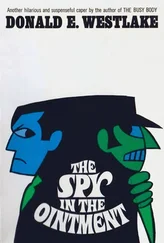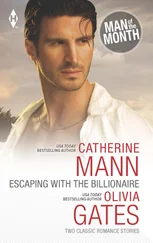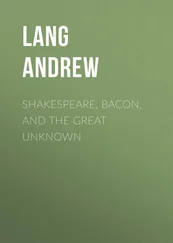Andrew Lang - Pickle the Spy; Or, the Incognito of Prince Charles
Здесь есть возможность читать онлайн «Andrew Lang - Pickle the Spy; Or, the Incognito of Prince Charles» — ознакомительный отрывок электронной книги совершенно бесплатно, а после прочтения отрывка купить полную версию. В некоторых случаях можно слушать аудио, скачать через торрент в формате fb2 и присутствует краткое содержание. Жанр: foreign_antique, foreign_prose, на английском языке. Описание произведения, (предисловие) а так же отзывы посетителей доступны на портале библиотеки ЛибКат.
- Название:Pickle the Spy; Or, the Incognito of Prince Charles
- Автор:
- Жанр:
- Год:неизвестен
- ISBN:нет данных
- Рейтинг книги:4 / 5. Голосов: 1
-
Избранное:Добавить в избранное
- Отзывы:
-
Ваша оценка:
- 80
- 1
- 2
- 3
- 4
- 5
Pickle the Spy; Or, the Incognito of Prince Charles: краткое содержание, описание и аннотация
Предлагаем к чтению аннотацию, описание, краткое содержание или предисловие (зависит от того, что написал сам автор книги «Pickle the Spy; Or, the Incognito of Prince Charles»). Если вы не нашли необходимую информацию о книге — напишите в комментариях, мы постараемся отыскать её.
Pickle the Spy; Or, the Incognito of Prince Charles — читать онлайн ознакомительный отрывок
Ниже представлен текст книги, разбитый по страницам. Система сохранения места последней прочитанной страницы, позволяет с удобством читать онлайн бесплатно книгу «Pickle the Spy; Or, the Incognito of Prince Charles», без необходимости каждый раз заново искать на чём Вы остановились. Поставьте закладку, и сможете в любой момент перейти на страницу, на которой закончили чтение.
Интервал:
Закладка:
One of James’s agents in Paris, Lord Sempil, writes to him on July 5, 1745, with warnings against the Prince’s counsellors, especially Sir Thomas Sheridan (Charles’s governor, and left-handed cousin) and Kelly. They, with Lally Tollendal and others, arranged the descent on Scotland without the knowledge of James or Sempil, whom Charles and his party bitterly distrusted, as they also distrusted Lord Lismore (O’Brien), James’s other agent. While the Prince was in Scotland (1745–1746), even before Prestonpans, the Jacobite affairs in France were perplexed by the action of Lismore, Sempil, and Balhaldie, acting for James, while the old Earl Marischal (who had been in the rising of 1715, and the Glenshiel affair of 1719) acted for the Prince. With the Earl Marischal was, for some time, Lord Clancarty, of whom Sempil speaks as ‘a very brave and worthy man.’ 31 31 Stuart Papers. Browne, iii. 433. September 13, 1745.
On the other hand, Oliver Macallester, the spy, describes Clancarty, with whom he lived, as a slovenly, drunken, blaspheming rogue, one of whose eyes General Braddock had knocked out with a bottle in a tavern brawl! Clancarty gave himself forth as a representative of the English Jacobites, but d’Argenson, in his ‘Mémoires,’ says he could produce no names of men of rank in the party except his own. D’Argenson was pestered by women, priests, and ragged Irish adventurers. In September 1745, the Earl Marischal and Clancarty visited d’Argenson, then foreign minister of Louis XV. in the King’s camp in Flanders. They asked for aid, and the scene, as described by the spy Macallester, on Clancarty’s information, was curious. D’Argenson taunted the Lord Marischal with not being at Charles’s side in Scotland. To the slovenly Clancarty he said, ‘Sir, your wig is ill-combed. Would you like to see my perruquier? He manages wigs very well.’ Clancarty, who wore ‘an ordinary black tie-wig,’ jumped up, saying in English, ‘Damn the fellow! He is making his diversion of us.’ 32 32 Macallester’s book is entitled A Series of Letters , &c. London, 1767.
The Lord Marischal was already on bad personal terms with Charles. Clancarty was a ruffian, d’Argenson was the adviser who suggested Charles’s hidden and fugitive life after 1748. The singular behaviour of the Earl Marischal in 1751–1754 will afterwards be illustrated by the letters of Pickle, who drew much of his information from the unsuspicious old ambassador of Frederick the Great to the Court of Versailles. It is plain that the Duke of Ormonde was right when he said that ‘too many people are meddling in your Majesty’s affairs with the French Court at this juncture’ (November 15, 1745). The Duke of York, Charles’s brother, was on the seaboard of France in autumn 1745. At Arras he met the gallant Chevalier Wogan, who had rescued his mother from prison at Innspruck. 33 33 Wogan to Edgar. Stuart Papers, 1750.
Clancarty, Lord Marischal, and Lally Tollendal were pressing for a French expedition to start in aid of Charles. Sempil, Balhaldie, Lismore, were intriguing and interfering. Voltaire wrote a proclamation for Charles to issue. An expedition was arranged, troops and ships were gathered at Boulogne. Swedes were to join from Gothenburg. On Christmas Eve, 1745, nothing was ready, and the secret leaked out. A million was sent to Scotland; the money arrived too late; we shall hear more of it. 34 34 D’Argenson, iv. 316–320.
The Duke of York, though he fought well at Antwerp, was kneeling in every shrine, and was in church when the news of Culloden was brought to him. This information he gave, in the present century, to one of the Stair family. 35 35 Stair Papers.
The rivalries and enmities went on increasing and multiplying into cross-divisions after Charles made his escape to France in August 1746. He was filled with distrust of his father’s advisers; his own were disliked by James. The correspondence of Horace Mann, and of Walton, an English agent in Florence, shows that England received all intelligence sent to James from Paris, and knew all that passed in James’s cabinet in Rome. 36 36 Letters in the State Paper Office. S. P. Tuscany. Walton sends to England copies of the letters of James’s adherents in Paris; Horace Mann sends the letters of Townley, whom James so disliked.
The Abbé Grant was suspected of being the spy.
Among so many worse than doubtful friends, Charles, after 1746, took his own course; even his father knew little or nothing of his movements. Between his departure from Avignon (February 1749) and the accession of Pickle to the Hanoverian side (Autumn 1749 or 1750), Charles baffled every Foreign Office in Europe. Indeed, Pickle was of little service till 1751 or 1752. Curious light on Charles’s character, and on the entangled quarrels of the Jacobites, is cast by d’Argenson’s ‘Mémoires.’ In Spring, 1747, the Duke of York disappeared from Paris, almost as cleverly as Charles himself could have done. D’Argenson thus describes his manœuvre. ‘He fled from Paris with circumstances of distinguished treachery’ ( insigne fourberie ) towards his brother, the Prince. He invited Charles to supper; his house was brilliantly lighted up; all his servants were in readiness; but he had made his escape by five o’clock in the afternoon, aided by Cardinal Tencin. His Governor, the Chevalier Graeme, was not in the secret. The Prince waited for him till midnight, and was in a mortal anxiety. He believed that the English attempts to kidnap or assassinate himself had been directed against his brother. At last, after three days, he received a letter from the Duke of York, ‘explaining his fatal design’ to accept a cardinal’s hat. ‘Prince Charles is determined never to return to Rome, but rather to take refuge in some hole in a rock .’
Charles, in fact, saw that, if he was to succeed in England, he could not have too little connection with Rome. D’Argenson describes his brother Henry as ‘Italian, superstitious, a rogue, avaricious, fond of ease, and jealous of the Prince.’ Cardinal Tencin, he says, and Lord and Lady Lismore, have been bribed by England to wheedle Henry into the cardinalate, ‘which England desires more than anything in the world.’ Charles expressed the same opinion in an epigram. Lady Lismore, for a short time believed to be the mistress of Louis XV., was deeply suspected. Whatever may be the truth of these charges, M. de Puysieux, an enemy of Charles, succeeded at the Foreign Office to d’Argenson, who had a queer sentimental liking for the Prince. Cardinal Tencin was insulted, and was hostile; the Lismores were absolutely estranged, if not treacherous; there was a quarrel between James and Henry in Rome, and Charles, in Paris. 37 37 D’Argenson’s Mémoires , v. 98, fol.
Such was the state of affairs at the end of 1747, while Pickle was still a prisoner in the Tower of London, engaged, he tells us, in acts of charity towards his fellow-captives!
Meanwhile Charles’s private conduct demands a moment’s attention. Madame de Pompadour was all powerful at Court. 38 38 Ibid. v. 183.
This was, therefore, a favourable moment for Charles, in a chivalrous affection for the injured French Queen (his dead mother’s kinswoman), to insult the reigning favourite. Madame de Pompadour sent him billets on that thick smooth vellum paper of hers, sealed with the arms of France. The Prince tossed them into the fire and made no answer; it is Pickle who gives us this information. Maria Theresa later stooped to call Madame de Pompadour her cousin. Charles was prouder or less politic; afterwards he stooped like Maria Theresa.
For his part, says d’Argenson, the Prince ‘now amused himself with love affairs. Madame de Guémené almost ravished him by force; they have quarrelled, after a ridiculous scene; he is living now with the Princesse de Talmond. He is full of fury, and wishes in everything to imitate Charles XII. of Sweden and stand a siege in his house like Charles XII. at Bender.’ This was in anticipation of arrest, after the Treaty of Aix-la-Chapelle, in which his expulsion from France was one of the conditions. This Princesse de Talmond, as we shall see, was the unworthy Flora Macdonald of Charles in his later wanderings, his protectress, and, unlike Flora, his mistress. She was not young; Madame d’Aiguillon calls her vieille femme in a curious play, ‘La Prison du Prince Charles Edouard Stuart,’ written by d’Argenson in imitation of Shakespeare. 39 39 Published by the Duc de Broglie, in Revue d’Histoire Diplomatique . No. 4. Paris, 1891.
The Princesse, née Marie Jablonowski, a cousin of the Queen of France and of Charles, married Anne Charles Prince de Talmond, of the great house of La Trimouille, in 1730. She must have been nearly forty in 1749, and some ten years older than her lover.
Интервал:
Закладка:
Похожие книги на «Pickle the Spy; Or, the Incognito of Prince Charles»
Представляем Вашему вниманию похожие книги на «Pickle the Spy; Or, the Incognito of Prince Charles» списком для выбора. Мы отобрали схожую по названию и смыслу литературу в надежде предоставить читателям больше вариантов отыскать новые, интересные, ещё непрочитанные произведения.
Обсуждение, отзывы о книге «Pickle the Spy; Or, the Incognito of Prince Charles» и просто собственные мнения читателей. Оставьте ваши комментарии, напишите, что Вы думаете о произведении, его смысле или главных героях. Укажите что конкретно понравилось, а что нет, и почему Вы так считаете.












